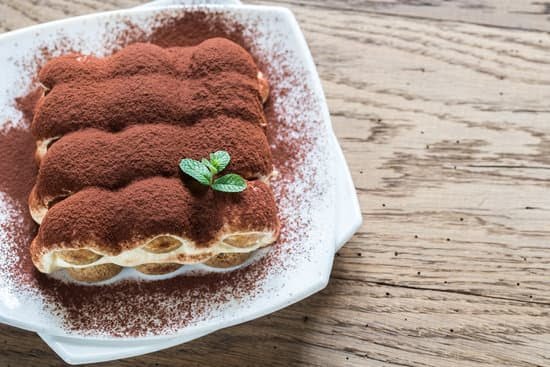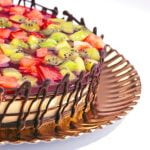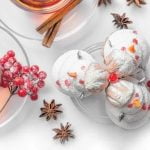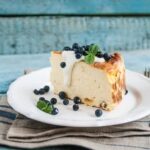Are you a beginner looking to learn how to decorate a cake with icing? Whether you’re preparing for a special occasion or simply want to learn a new skill, cake decorating can be both fun and rewarding. In this article, we’ll guide you through the basics of cake decorating with icing, from exploring different types of icing to mastering piping techniques and creative decorating ideas.
Before we dive into the specifics of cake decorating, it’s important to understand the different types of icing that are suitable for beginners. We’ll also provide a comprehensive list of essential tools and equipment needed for cake decorating with icing, so you can ensure that you have everything you need to get started.
Once you have your tools and ingredients ready, we’ll walk you through the basic techniques of crumb coating a cake and preparing it for icing. Additionally, we’ll provide tips and tricks for mastering piping techniques with different icing consistencies, as well as creative and beginner-friendly decorating ideas for various occasions. So, if you’re ready to embark on this sweet journey of cake decorating with icing, let’s get started.
Types of Icing
When it comes to decorating a cake with icing, choosing the right type of icing is crucial. As a beginner, it’s important to explore the different options available and understand their characteristics. Here are some types of icing that are suitable for beginners:
1. Buttercream: Buttercream icing is one of the most popular choices for beginners due to its easy application and smooth texture. It is made with butter, powdered sugar, and flavorings, and can be easily tinted with food coloring for vibrant designs.
2. Royal Icing: This type of icing dries hard and is perfect for creating intricate designs such as flowers, lace, and lettering. It is made with powdered sugar, egg whites or meringue powder, and water, making it ideal for detailed decorations.
3. Fondant: Fondant is a smooth and pliable icing that can be rolled out to cover cakes or molded into various shapes. While it may seem intimidating at first, fondant can create a sleek and professional finish to cakes once you get the hang of working with it.
4. Cream Cheese Frosting: This creamy and tangy frosting is perfect for those who prefer a less sweet option. It pairs well with red velvet and carrot cakes, adding a deliciously rich flavor.
As you start experimenting with different types of icing, consider the design you have in mind for your cake and choose the one that best suits your needs in terms of taste, texture, and ease of use.
Essential Tools
When it comes to decorating a cake with icing, having the right tools and equipment is essential for beginners. While there are many fancy gadgets and devices available, you can start with just a few basic items. The most important tool is a good quality offset spatula, which will help you spread the icing smoothly on the cake. Other essential tools include a turntable, piping bags, piping tips, a bench scraper, and an icing smoother.
A turntable is especially useful for beginners as it allows you to easily rotate the cake while you are applying the icing. Piping bags and tips are necessary for creating different designs and adding decorative elements to your cake. A bench scraper and an icing smoother are helpful for achieving clean and professional-looking finishes on your cake.
In addition to these tools, having the right type of icing is also crucial. For beginners, it’s best to start with buttercream icing as it is easy to work with and can be used for various decorating techniques. As you progress in your skills, you can explore other types of icing such as royal icing or fondant.
Lastly, investing in a good quality cake decorating kit that includes these essential tools will set you up for success in learning how to decorate a cake with icing for beginners.
| Tool | Use |
|---|---|
| Offset spatula | Spreading icing on the cake |
| Turntable | Rotating the cake while applying the icing |
| Piping bags and tips | Creating different designs and adding decorative elements |
Basic Techniques
When it comes to cake decorating with icing, one of the most fundamental steps is crumb coating the cake. A crumb coat is a thin layer of icing that locks in the crumbs and creates a smooth base for the final layer of icing. This step is crucial in achieving a professional-looking finish on your cake. Here’s a step-by-step guide on how to crumb coat a cake for beginners:
- Start by leveling your cake layers to ensure an even surface for icing. You can use a long serrated knife or a cake leveler for this step.
- Place a small dollop of icing onto the center of your cake board or serving plate to secure the cake in place.
- Place the first cake layer on the board and add a generous amount of icing on top. Use an offset spatula to spread the icing evenly across the surface.
- Add the next layer and repeat, making sure each layer is level and evenly iced.
- Once all layers are stacked, apply a thin layer of icing all over the entire cake to seal in any loose crumbs. This acts as the crumb coat.
- Use a bench scraper or offset spatula to smooth out the crumb coat, ensuring that it’s even all around.
By following these steps, you’ll have successfully crumb coated your cake in preparation for adding the final layer of icing. It’s important to take your time with this process and be patient as it may take some practice to perfect your technique.
| Cake Decorating Steps | Description |
|---|---|
| Leveling Cake Layers | Ensuring even surfaces for icing |
| Adding Icing Between Layers | Generously spreading icing between each layer |
| Sealing Crumbs with Thin Layer of Icing | Applying and smoothing out the crumb coat |
The Art of Piping
When it comes to cake decorating with icing, mastering the art of piping is essential for creating beautiful and intricate designs. Whether you’re a beginner or have some experience with cake decorating, understanding how to use different icing consistencies for piping is crucial. In this section, we will explore some tips and tricks for mastering piping techniques with different icing consistencies.
Choosing the Right Icing Consistency
One of the most important aspects of successful piping is using the right consistency of icing. For beginners, it’s essential to understand the difference between stiff, medium, and thin consistency icings. Stiff icing is perfect for creating intricate details and borders, while medium consistency is ideal for outlining and filling in designs. Thin consistency icing is great for creating smooth surfaces and writing messages on cakes.
Mastering Piping Techniques
Learning how to handle a piping bag and nozzle takes practice, but with time and patience, you can develop steady hands and precision. Start by practicing basic piping techniques such as making dots, lines, swirls, and rosettes on a flat surface before moving on to actual cakes. It’s also helpful to watch tutorial videos online or take a cake decorating class to learn different piping techniques.
Maintaining Control of Your Icing
Another key aspect of mastering piping techniques with different icing consistencies is learning how to maintain control over the flow of your icing. This involves understanding how much pressure to apply when squeezing the piping bag and how fast or slow to move your hand while piping. With consistent practice, you’ll be able to achieve smooth and even lines without any breaks or bumps in your designs.
As a beginner in cake decorating with icing, it’s important not to get discouraged if your first attempts at piping don’t turn out perfectly. Remember that practice makes perfect, and with dedication and patience, you’ll soon be able to create stunning designs on your cakes.
Decorating Ideas
Decorating a cake with icing offers a world of creative possibilities, and as a beginner, you may be wondering where to start. Whether you’re decorating a cake for a birthday, wedding, or any other special occasion, there are plenty of simple and effective techniques that you can master. Here are some beginner-friendly ideas for decorating cakes with icing:
Simple Buttercream Flowers
Buttercream flowers are an easy way to add a touch of elegance to your cake. Start by piping small dots in a circular motion to create the center of the flower, then pipe petals around the center using a petal tip. These buttercream flowers can be used as accents or to create beautiful floral designs on the entire cake.
Colorful Swirls and Dots
A fun and versatile decorating idea is to use different colored buttercream icing to create swirls and dots on your cake. Use piping bags fitted with various tips to pipe colorful swirls, dots, or even stripes onto the cake’s surface. This technique is not only beginner-friendly but also allows you to unleash your creativity with vibrant colors.
Edible Image Decorations
For those who may not feel confident in their freehand piping skills just yet, edible image decorations are an excellent option. You can have custom images printed onto edible paper and then simply adhere them to the surface of your iced cake. This is a great way to add personalized touches for special occasions.
These beginner-friendly decorating ideas using icing will help you build confidence and develop your skills as a cake decorator. Remember that practice makes perfect, so don’t be afraid to experiment with different techniques and designs until you find what works best for you. With time and patience, you’ll be creating beautifully decorated cakes that will impress your friends and family in no time.
Troubleshooting
When decorating a cake with icing for the first time, it’s common to encounter some challenges along the way. Here are some common mistakes that beginners may face, and how to fix them:
1. Crumbs in the icing: If you find that your icing is picking up crumbs from the cake and causing a messy appearance, you can try using a crumb coat. This is a thin layer of icing that traps any loose crumbs before applying the final layer of icing. To do this, simply spread a thin layer of icing over the entire cake, then refrigerate it until the icing is firm before adding another layer.
2. Uneven or lumpy icing: Achieving a smooth and even coat of icing can be tricky for beginners. For buttercream icing, try using an offset spatula to spread the icing in a smooth, even motion. If air bubbles or lumps appear in your royal icing, you can use a toothpick to gently pop any bubbles and smooth out the surface.
3. Icing too runny or too stiff: Getting the right consistency of icing can be challenging for beginners. If your buttercream or royal icing is too runny, try adding more powdered sugar to thicken it. On the other hand, if it’s too stiff, you can add small amounts of milk or water to thin it out gradually until you reach the desired consistency.
Remember that practice makes perfect when it comes to decorating cakes with icing. Don’t be discouraged by these common mistakes – they are all part of the learning process when starting out with cake decorating.
- Use a crumb coat to prevent crumbs in the final layer of icing
- Smooth out uneven or lumpy icing with an offset spatula
- Adjust the consistency of your buttercream or royal icing by adding powdered sugar or liquid as needed
Practice Makes Perfect
In conclusion, mastering the art of cake decorating with icing is a delightful and rewarding experience. It allows beginners to tap into their creativity and create beautiful, personalized confections for any occasion. By learning about the different types of icing, essential tools, basic techniques, piping skills, decorating ideas, troubleshooting common mistakes, and seeking out resources for practice and improvement, beginners can develop their skills in no time.
Learning how to decorate a cake with icing for beginners can be made easier by following the step-by-step guide provided in this article. From crumb coating a cake to mastering piping techniques with different icing consistencies, there are plenty of tips and tricks that can help novices feel more confident in their abilities. Additionally, exploring creative and beginner-friendly decorating ideas using icing for various occasions will inspire individuals to try new techniques and experiment with different designs.
Remember that practice makes perfect when it comes to cake decorating with icing. There are many resources available for honing these skills, such as online tutorials, instructional books, or even local classes or workshops. By seeking out these opportunities for practice and improvement, beginners can continue to refine their abilities and take their cake decorating to the next level. With dedication and a willingness to learn from mistakes, anyone can become proficient in the art of decorating cakes with icing.
Frequently Asked Questions
How Do You Put Icing on a Cake for Beginners?
When putting icing on a cake as a beginner, it’s important to start with a crumb coat to seal in any loose crumbs. Once the crumb coat sets, apply a thicker layer of icing and use a spatula to smooth it out.
Where Do You Start When Icing a Cake?
When icing a cake, it’s best to start by placing the cake on a turntable for easy access. Begin by adding a generous amount of icing on top of the cake, then use an offset spatula to spread it evenly from the center outwards.
How Do You Make a Homemade Cake Look Professional?
To make a homemade cake look professional, focus on even layers and smooth surfaces. Using a rotating cake stand can help achieve this. Additionally, piping decorations or using edible flowers and fruits can elevate the overall appearance of the cake.

Welcome to our cake decorating blog! My name is Destiny Flores, and I am the proud owner of a cake decorating business named Cake Karma. Our mission is to provide delicious, beautiful cakes for all occasions. We specialize in creating custom cakes that are tailored specifically to each customer’s individual needs and tastes.





